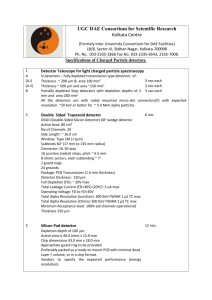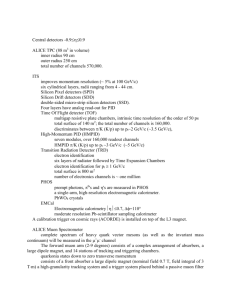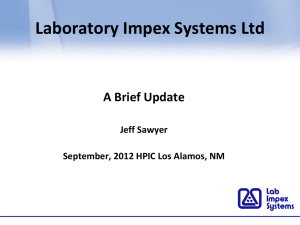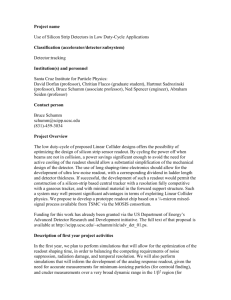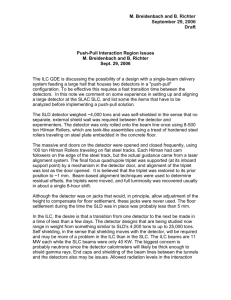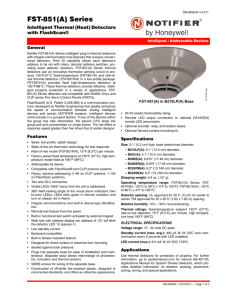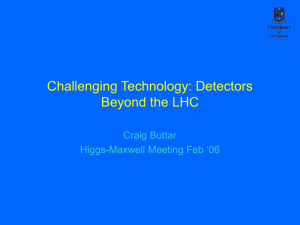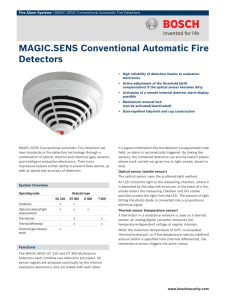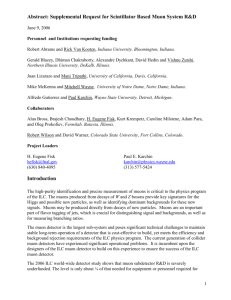SRS CfD description
advertisement
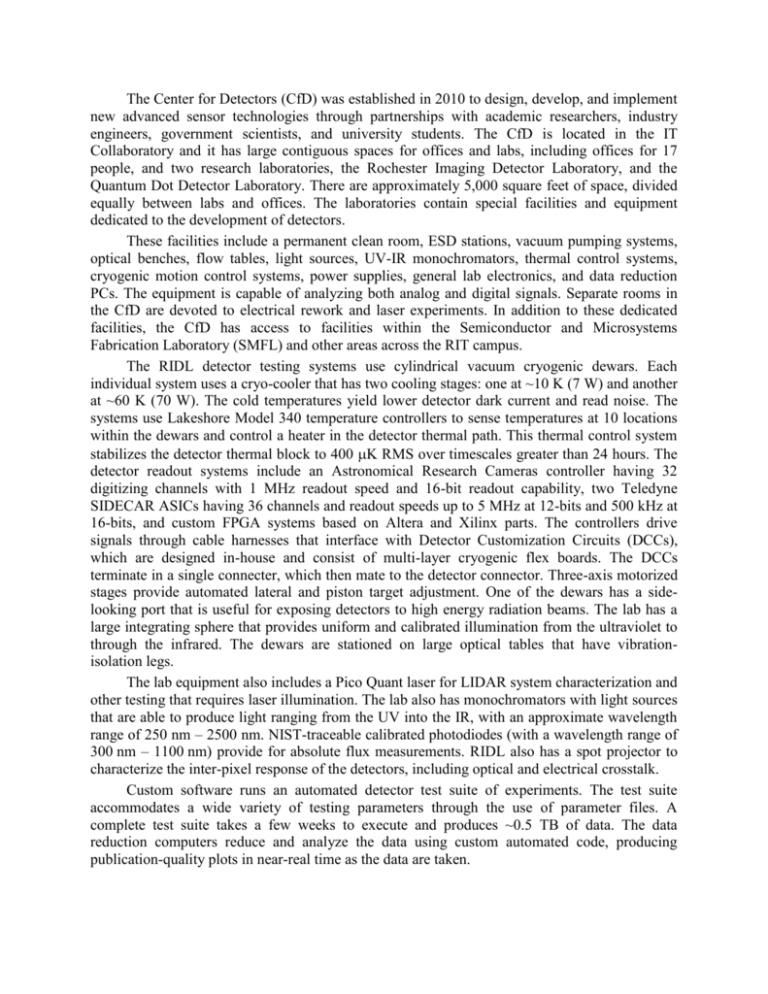
The Center for Detectors (CfD) was established in 2010 to design, develop, and implement new advanced sensor technologies through partnerships with academic researchers, industry engineers, government scientists, and university students. The CfD is located in the IT Collaboratory and it has large contiguous spaces for offices and labs, including offices for 17 people, and two research laboratories, the Rochester Imaging Detector Laboratory, and the Quantum Dot Detector Laboratory. There are approximately 5,000 square feet of space, divided equally between labs and offices. The laboratories contain special facilities and equipment dedicated to the development of detectors. These facilities include a permanent clean room, ESD stations, vacuum pumping systems, optical benches, flow tables, light sources, UV-IR monochromators, thermal control systems, cryogenic motion control systems, power supplies, general lab electronics, and data reduction PCs. The equipment is capable of analyzing both analog and digital signals. Separate rooms in the CfD are devoted to electrical rework and laser experiments. In addition to these dedicated facilities, the CfD has access to facilities within the Semiconductor and Microsystems Fabrication Laboratory (SMFL) and other areas across the RIT campus. The RIDL detector testing systems use cylindrical vacuum cryogenic dewars. Each individual system uses a cryo-cooler that has two cooling stages: one at ~10 K (7 W) and another at ~60 K (70 W). The cold temperatures yield lower detector dark current and read noise. The systems use Lakeshore Model 340 temperature controllers to sense temperatures at 10 locations within the dewars and control a heater in the detector thermal path. This thermal control system stabilizes the detector thermal block to 400 K RMS over timescales greater than 24 hours. The detector readout systems include an Astronomical Research Cameras controller having 32 digitizing channels with 1 MHz readout speed and 16-bit readout capability, two Teledyne SIDECAR ASICs having 36 channels and readout speeds up to 5 MHz at 12-bits and 500 kHz at 16-bits, and custom FPGA systems based on Altera and Xilinx parts. The controllers drive signals through cable harnesses that interface with Detector Customization Circuits (DCCs), which are designed in-house and consist of multi-layer cryogenic flex boards. The DCCs terminate in a single connecter, which then mate to the detector connector. Three-axis motorized stages provide automated lateral and piston target adjustment. One of the dewars has a sidelooking port that is useful for exposing detectors to high energy radiation beams. The lab has a large integrating sphere that provides uniform and calibrated illumination from the ultraviolet to through the infrared. The dewars are stationed on large optical tables that have vibrationisolation legs. The lab equipment also includes a Pico Quant laser for LIDAR system characterization and other testing that requires laser illumination. The lab also has monochromators with light sources that are able to produce light ranging from the UV into the IR, with an approximate wavelength range of 250 nm – 2500 nm. NIST-traceable calibrated photodiodes (with a wavelength range of 300 nm – 1100 nm) provide for absolute flux measurements. RIDL also has a spot projector to characterize the inter-pixel response of the detectors, including optical and electrical crosstalk. Custom software runs an automated detector test suite of experiments. The test suite accommodates a wide variety of testing parameters through the use of parameter files. A complete test suite takes a few weeks to execute and produces ~0.5 TB of data. The data reduction computers reduce and analyze the data using custom automated code, producing publication-quality plots in near-real time as the data are taken. CfD has the capability to design system components needed for detector testing using CAD programs, e.g. SolidWorks. This thermal finite element analysis software is also used to simulate thermal cooling of system components and detectors. Eagle and PCB Express are used to design layouts for readout circuits that interface with the detectors. System-based software tasks also include data processing with IDL, C, and C++ and HDL programming on Xilinx and Altera chips along with the SIDECAR ASIC. CfD has a dedicated class 1000 cleanroom (by FED Standard 209E), located in the SMFL. The SMFL has 10,000 ft2 of additional cleanroom space in class 1000, 100, and 10. Using the SMFL’s resources, the Center can fabricate detectors with custom process flows and the freedom to use multiple process variations. The Center’s cleanroom and probe stations allow wafer-level testing, even during the fabrication process, allowing mid-process design changes (see Error! Reference source not found.). The probe station accommodates electrical and circuit analysis of both wafers and packaged parts, including low current and radio frequency (RF) probing. Also available for the CfD’s use are the Amray 1830 Scanning Electron Microscope (SEM), used for highmagnification imaging of devices, and the WYKO white light interferometer, used for surface topography measurements. The SMFL also has other in-line fabrication metrology capabilities, including material layer thickness, refractive index, and wafer stress characterization tools. In addition to fabrication and testing capabilities, the Center for Detectors has access to sophisticated simulation software to predict the performance of devices, from fabrication processes to performance of a completed device. Silvaco Athena and Atlas are powerful software engines that simulate the effects of processing on device substrates and the electrical characteristics of a fabricated device. Athena simulations can describe all of the processes available in the RIT SMFL, building a physics-based model in 3D space of a device from initial substrate to completed device. From this model, the user can ascertain doping profiles, carrier densities, depletion widths, junction depths, and dielectric layer thickness, among other parameters, all from initial conditions set by actual fabrication process recipes. Multiple devices can be simulated in a single model, so both inter- and intra-pixel performance can be characterized. Atlas can then simulate performance by deriving, e.g., current-voltage, photovoltaic, charge distribution, point spread function, and quantum efficiency (both internal and external) characteristics through user-defined operating conditions.


